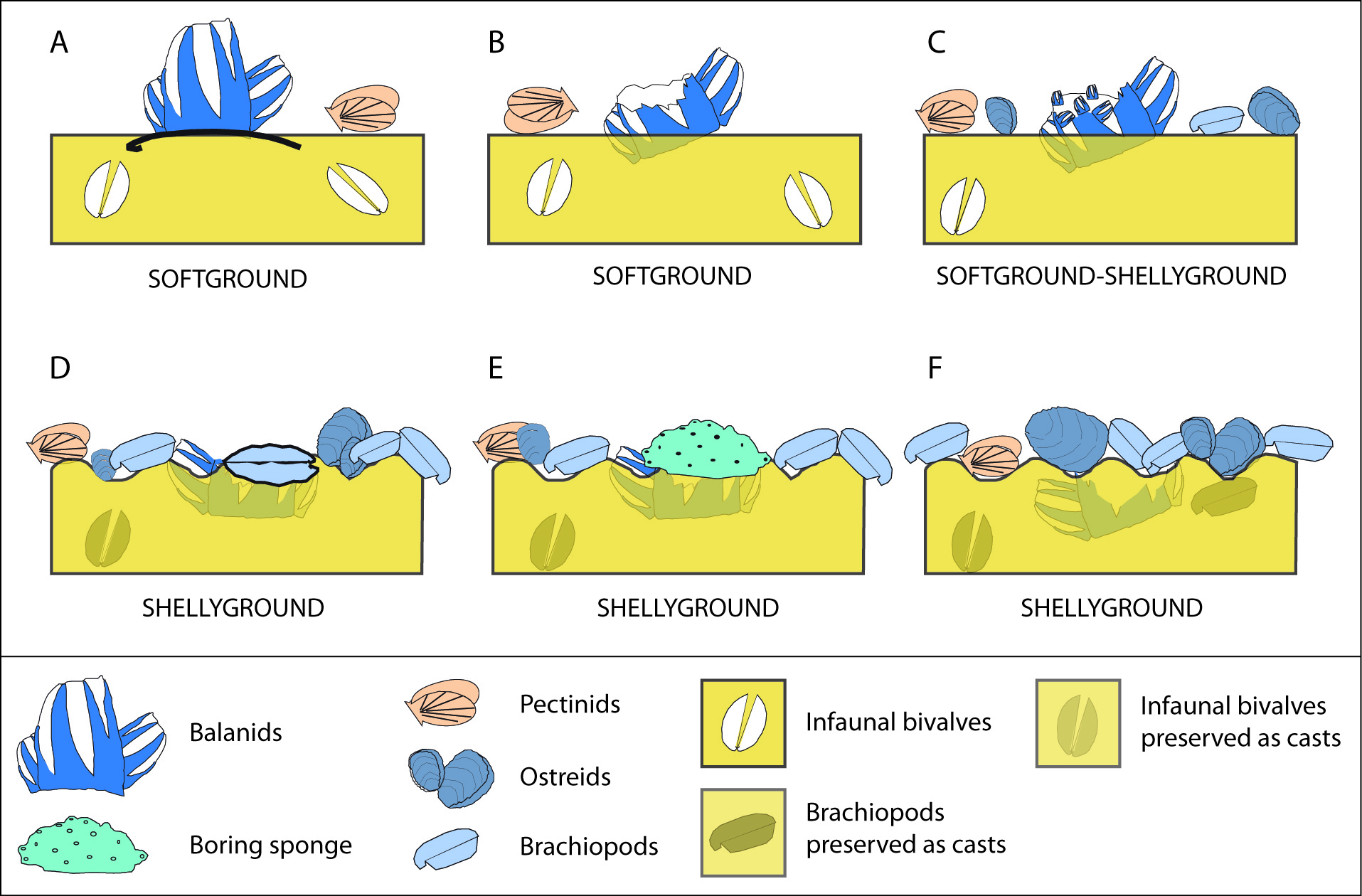NATURAL CASTS OF ENTOBIA FROM THE LATE CAENOZOIC OF SICILY
DOI:
https://doi.org/10.54103/2039-4942/15175Keywords:
boring sponges; bioerosion; natural casts; taphonomy; shell bed; Mediterranean; late CaenozoicAbstract
As with other ichnofossils, the study of the ichogenus Entobia Bronn, 1837, attributed to the activity of boring sponges, is useful to understand taphonomic processes and reconstruct paleoenvironments. Here we delineate a diverse Entobia assemblage from Sicily, the first described from this Mediterranean island, based on the discovery of well-preserved natural casts. The studied association is represented by seven ichnotaxa, Entobia cateniformis, E. cateniformis form A, E. geometrica, E. laquea, E. ?megastoma, E. ovula, E. ?paradoxa, which come from the late Caenozoic sites of Altavilla Milicia and Sferracavallo, in north-western Sicily. Aragonitic bivalves, mostly veneroids, served as substrate for the boring organisms responsible of producing these ichnotaxa. Entobia was also found associated with natural casts of the boring Caulostrepsis taeniola, produced by polychaetes. Ichnology and shell-bed taphonomy indicates that investigated deposits formed in conditions of low rate of sedimentation; post depositional processes involved chemical conditions favorable to the preservation of calcite shells.
Metrics

Downloads
Published
Issue
Section
License
Copyright (c) 2022 VITTORIO GARILLI, ÁRPÁD DÁVID , STEFANO DOMINICI

This work is licensed under a Creative Commons Attribution-NonCommercial-NoDerivatives 4.0 International License.
The journal allow the author(s) to hold the copyright without restrictions.
Accepted 2021-09-27
Published 2022-02-16






